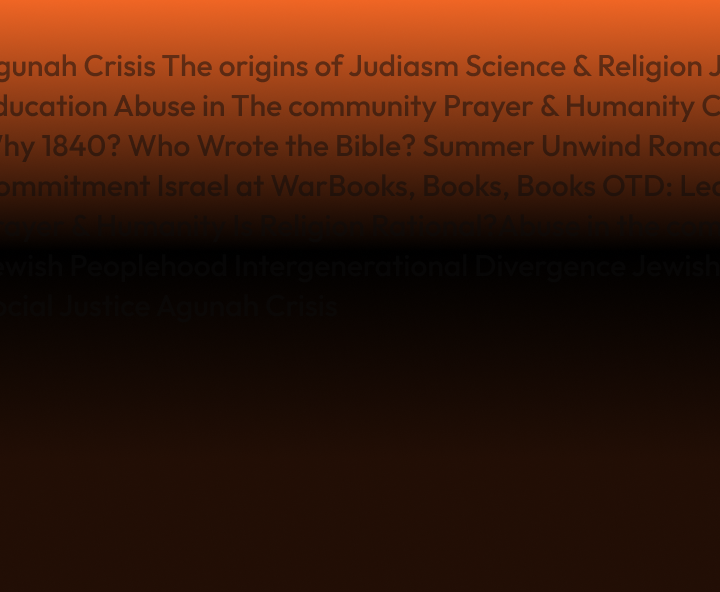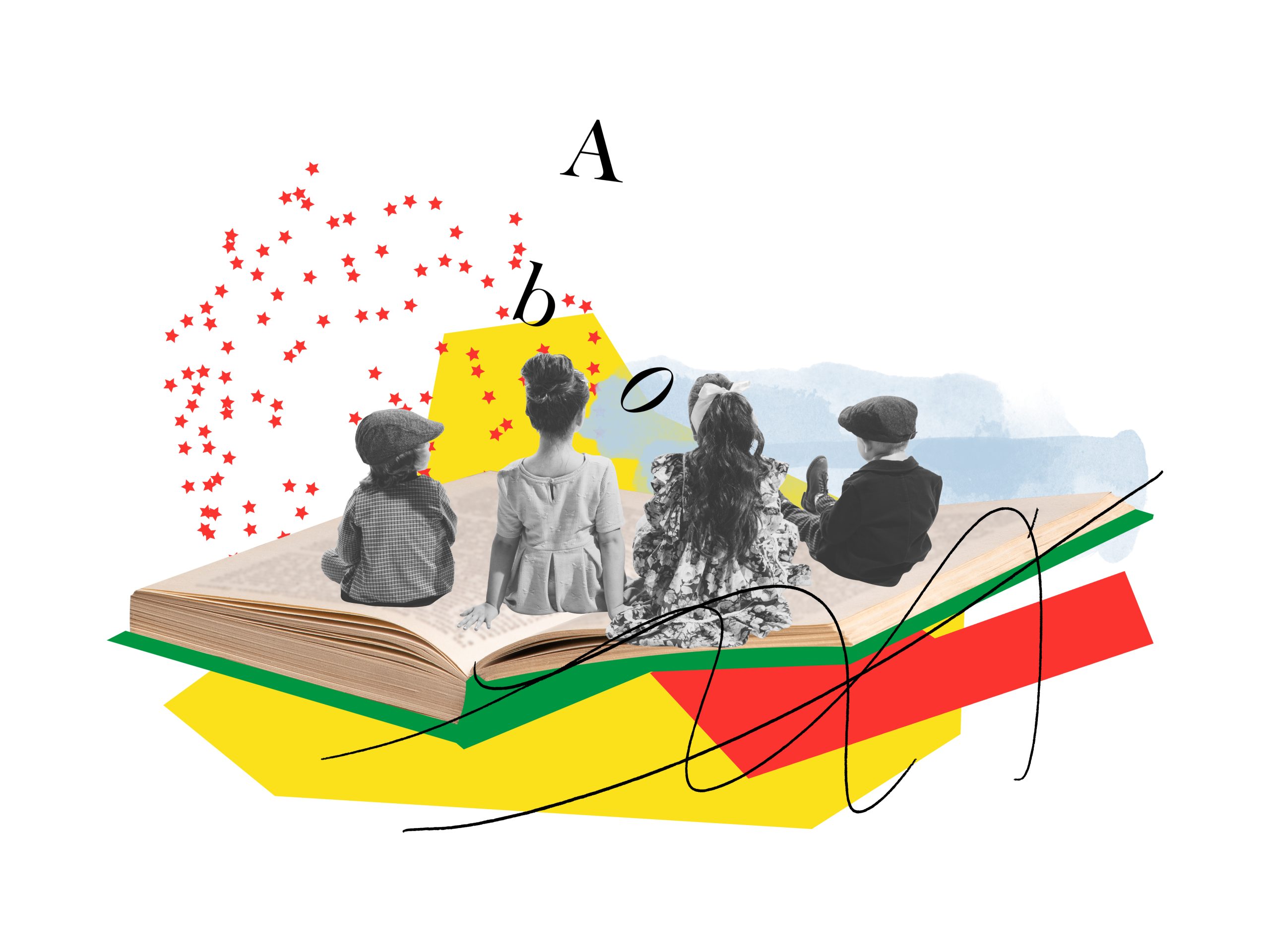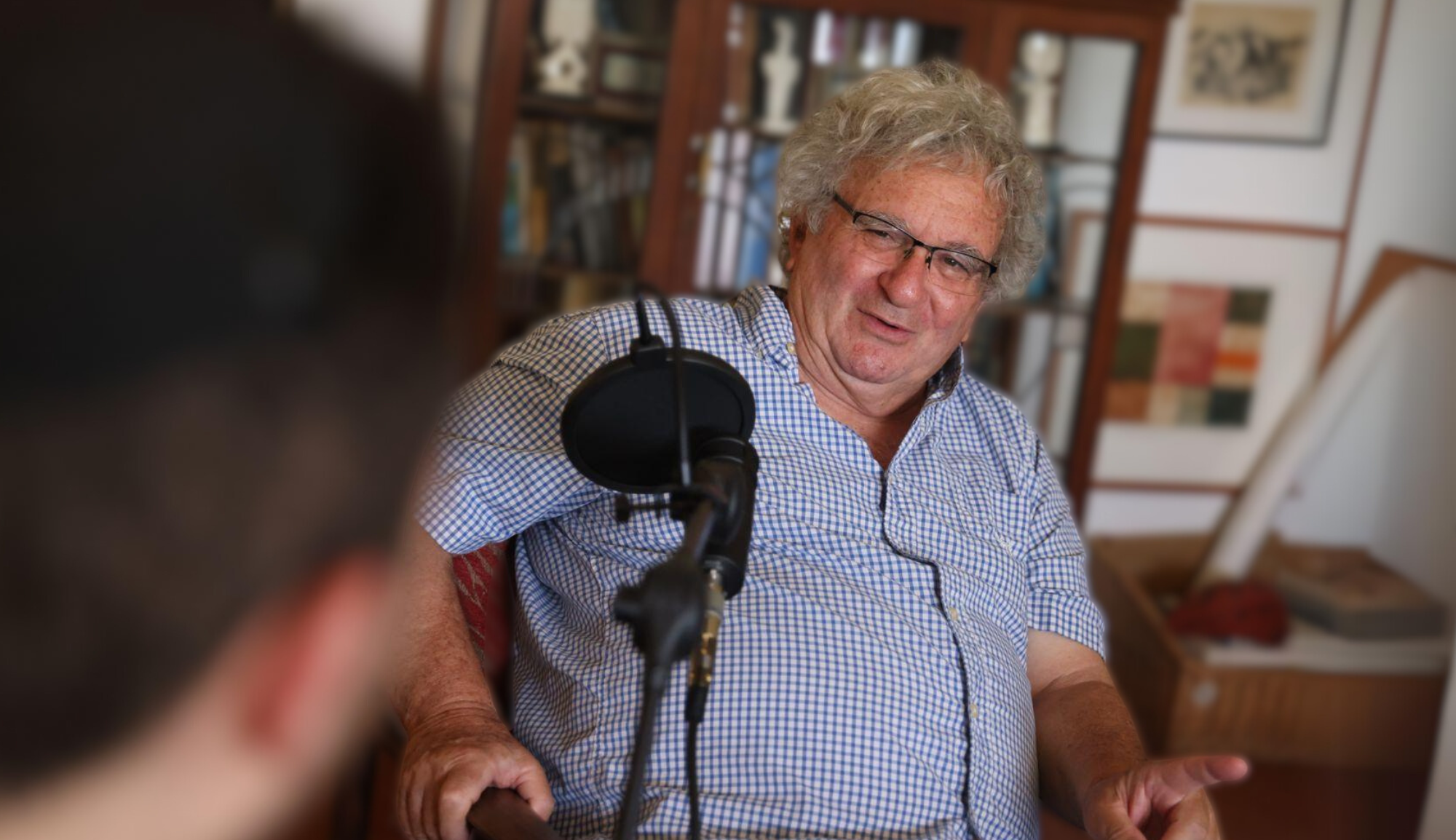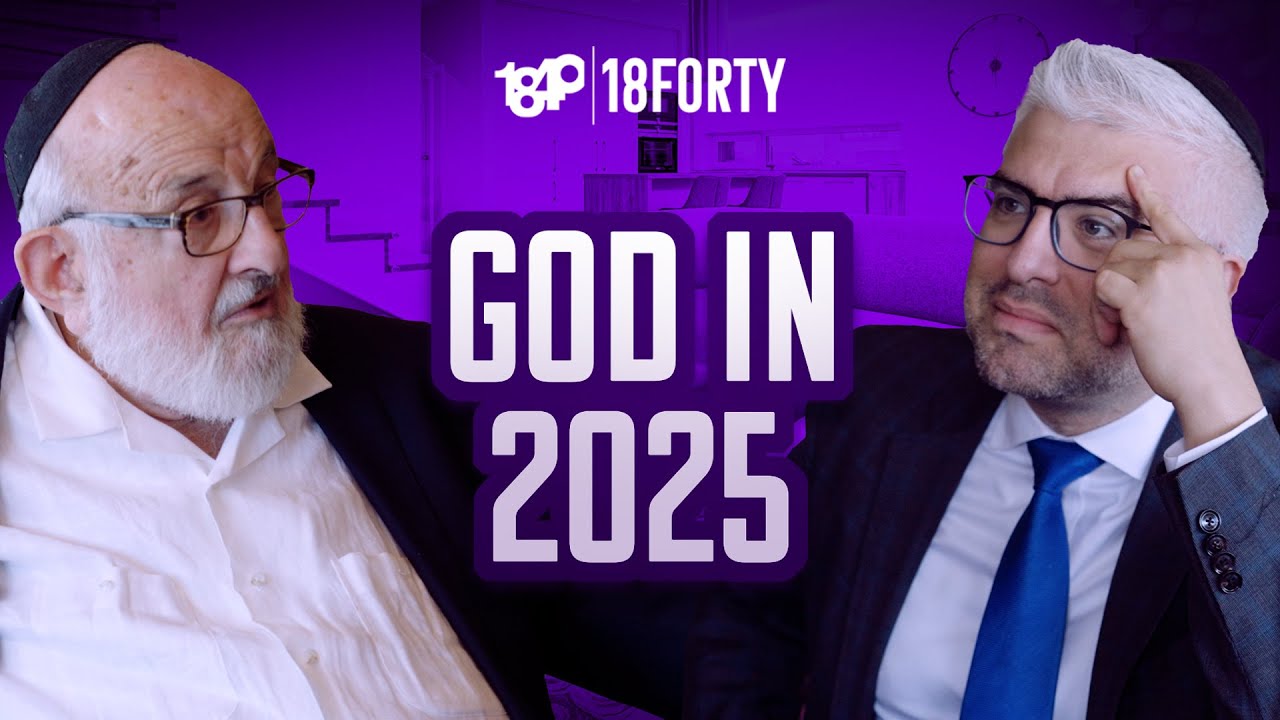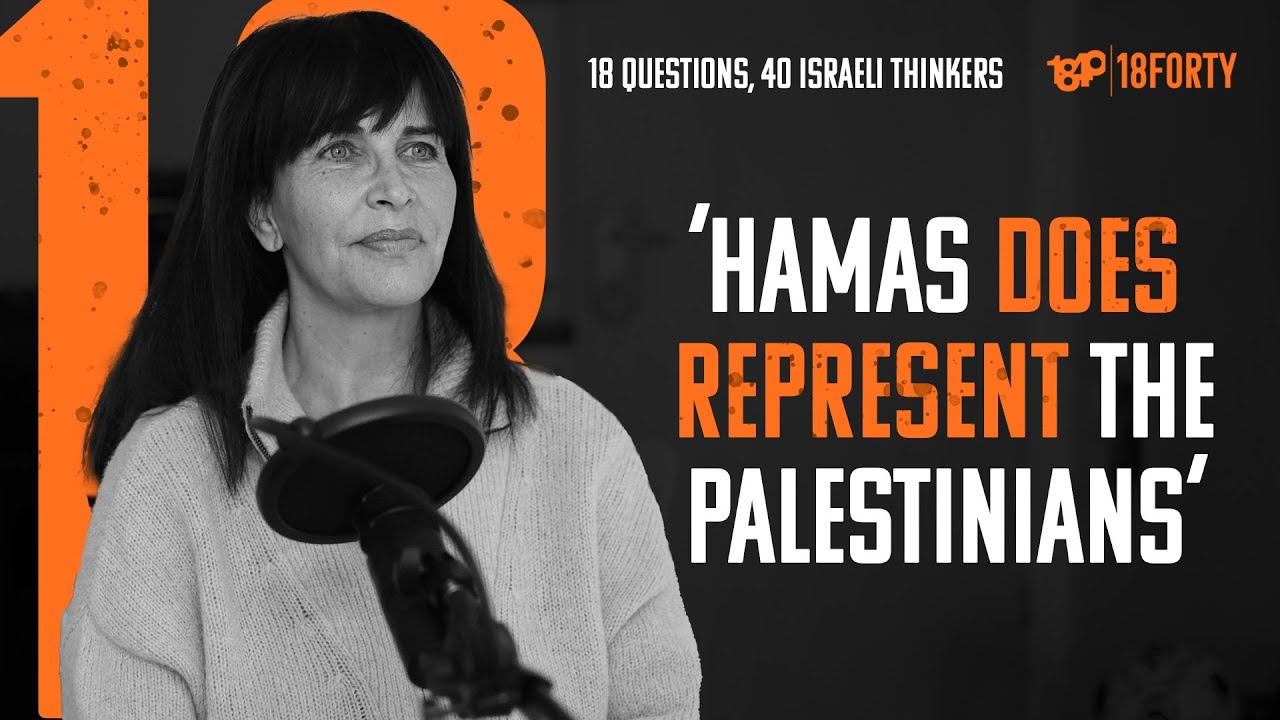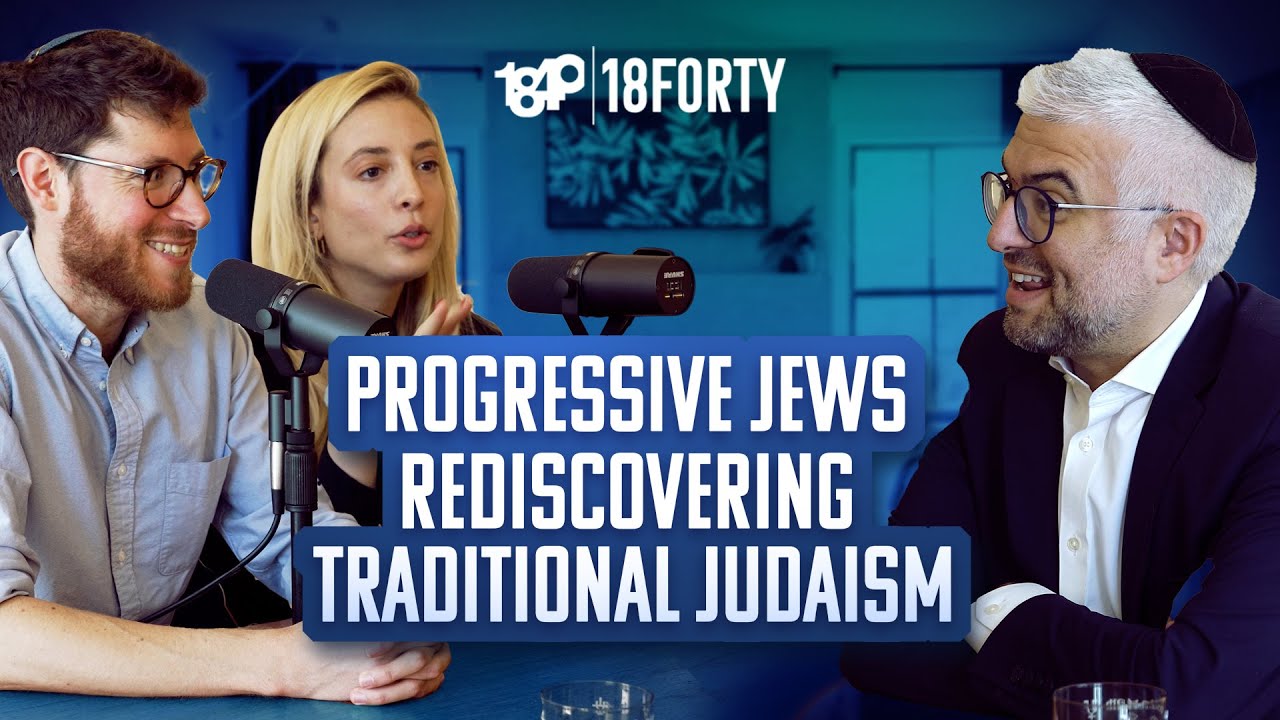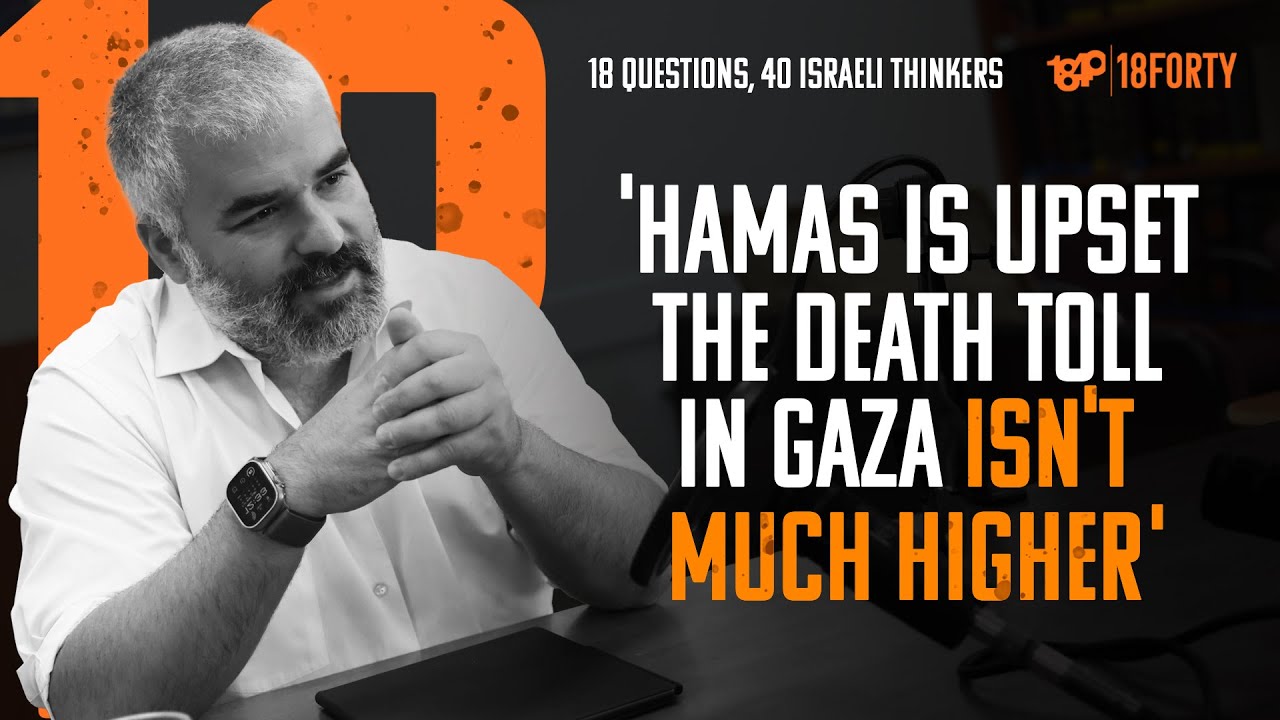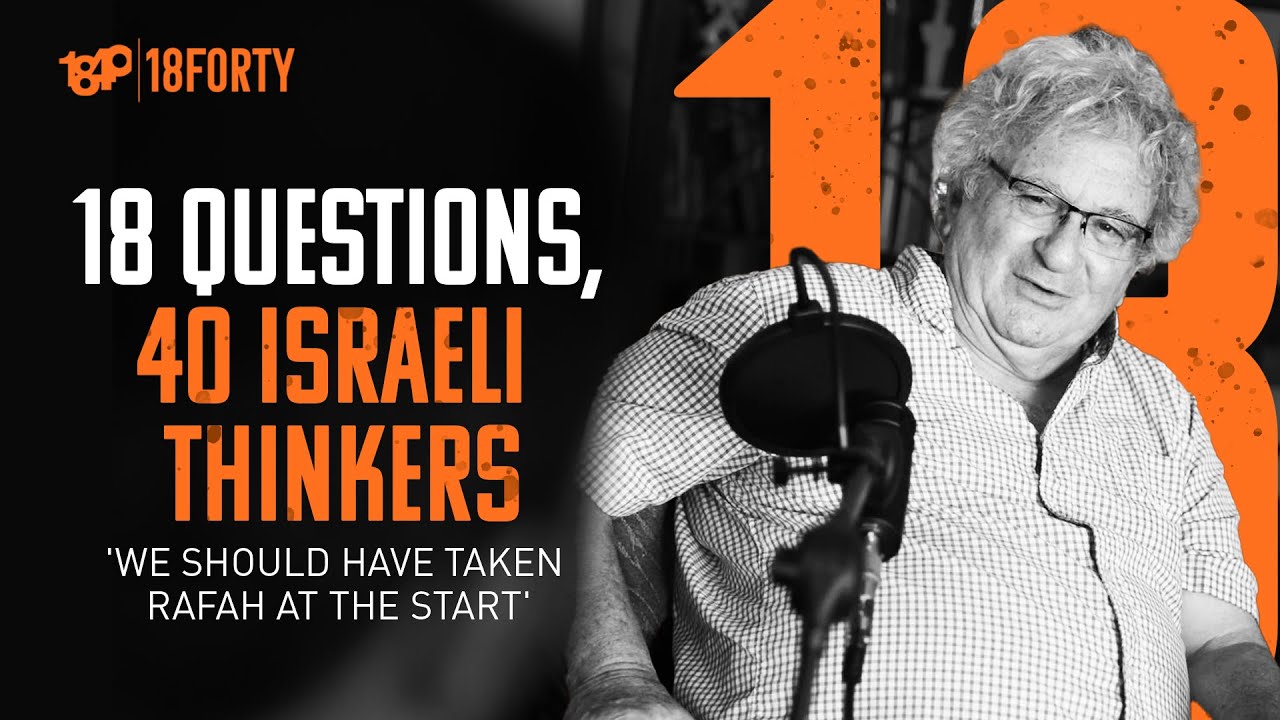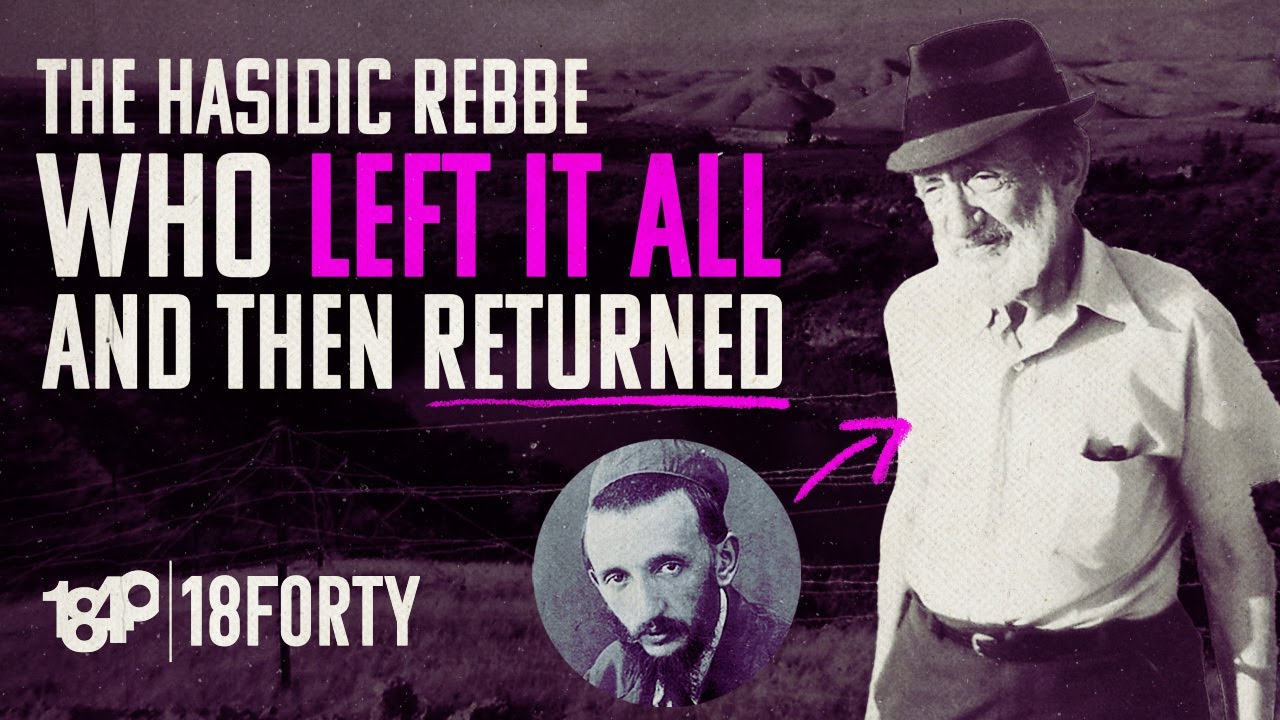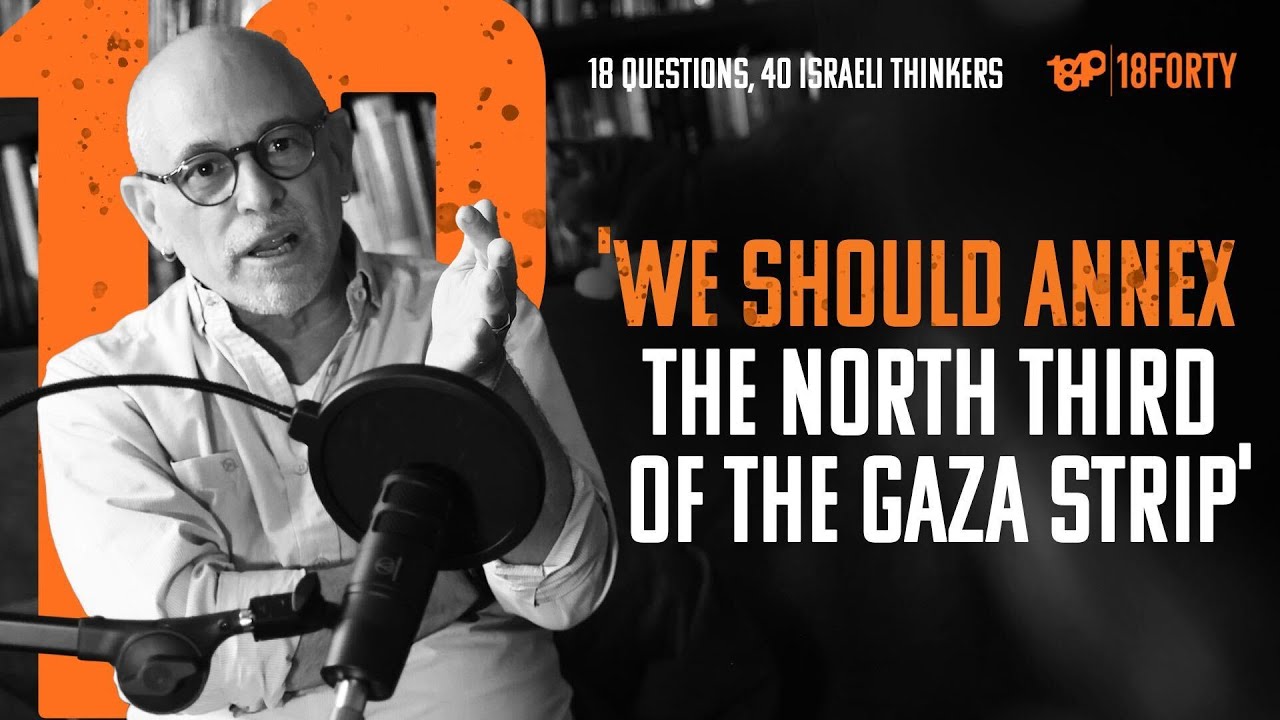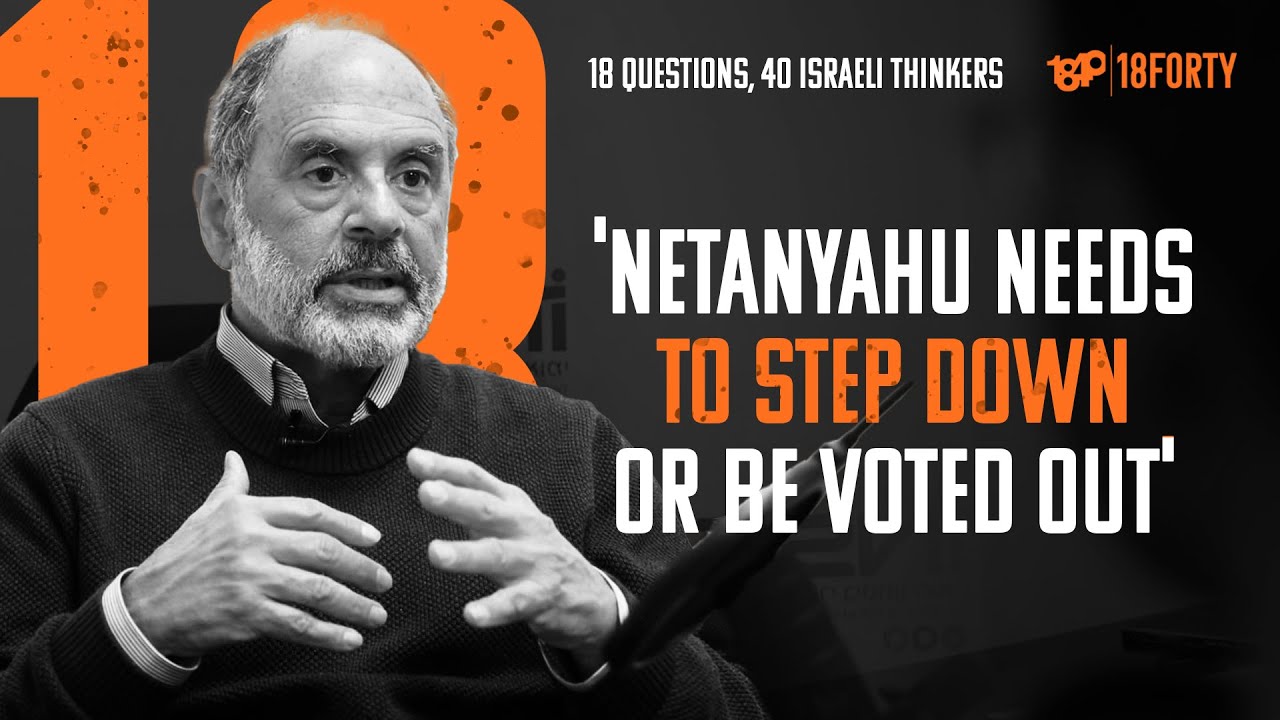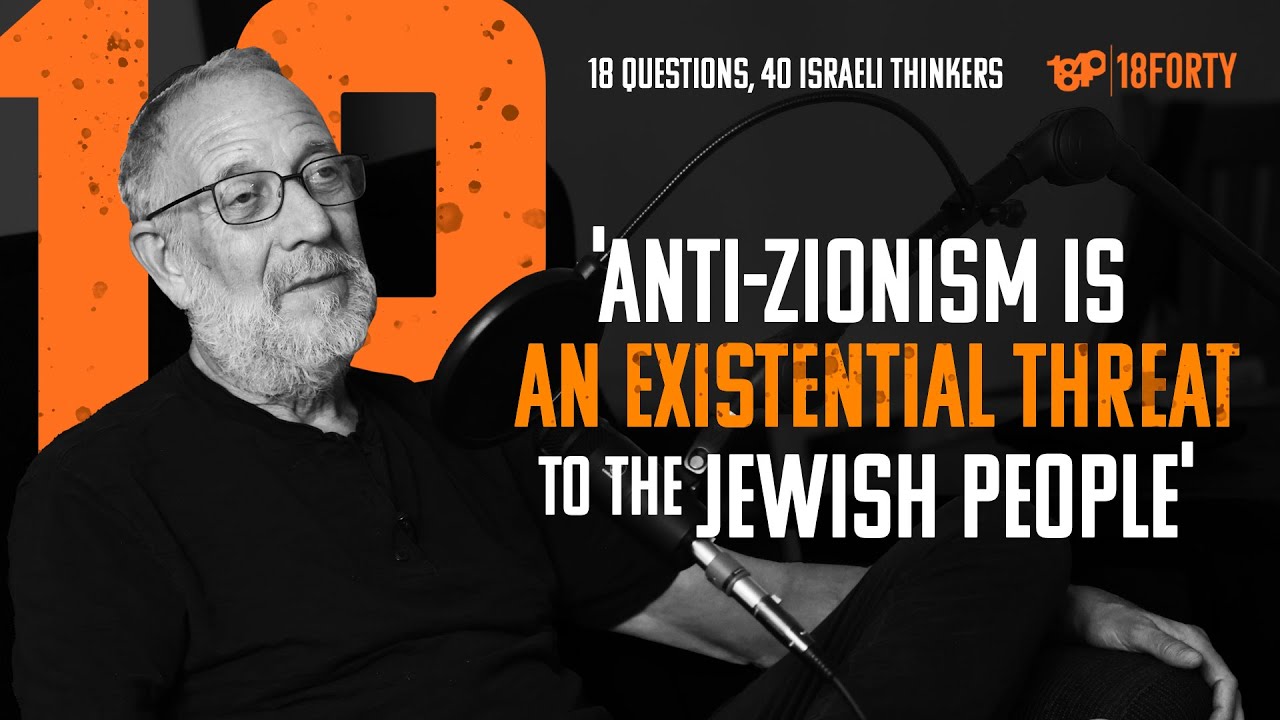This essay is the fourth in the author’s five-part series for 18Forty’s explorations of the origins of Judaism. The third can be found here. The entire series can be found compiled here.
The Enlightenment that swept the Western world in the 18th century brought with it a new fervor for scientific and rational thought. Some of its intellectuals were fascinated by the search for the essence of things. What, for example, made fire burn? Scientists suggested that a weightless, undetectable element called phlogiston was the secret to combustion, or the essence of fire. Although the discovery of oxygen and its role in enabling fire disproved phlogiston by the end of the 18th century, the search for essences was not limited to science. Could there also be an essence to each religion, a moral principle that animated it? Perhaps, through historical inquiry, one could strip away religion’s accretions, its senseless rituals, and be left with pure, rational devotion to God.
Predictably, there were scholars who sought Judaism’s essence. Abraham Geiger (1810-1874), one of the German Reform movement’s most important theologians, wanted to modernize Jewish liturgy and relax halachic norms. To justify his approach, he looked for Judaism’s moral core. Peeling back the historical layers, Geiger pinned much of the blame for Judaism’s excessive attention to halacha on the Oral Torah, particularly Chazal’s irrational derashot that expanded halacha beyond its original bounds and outside the realm of reason. In 1841, Geiger complained (in German) that in the Gemara, through derash, “Words and letters were interpreted in the most arbitrary way” and “analogies were found in the most accidental and contingent similarities.” Geiger wanted to return Judaism to the days of the Bible and its earliest sages. The Talmudic rabbis stood in the way.
Samuel Holdheim (1806-1880), perhaps the most radical of the early reformers, wanted (in good Enlightenment fashion) to maintain only those few halachic principles that rested on reason and conscience alone. In his 1860 Ma’amar ha-Ishut, which contrasted the approaches of the rabbis and the Karaites to the laws of marriage, he writes that “the rabbis are concerned with the law; the Karaites, with the legislator.” Holdheim suggested that halacha, by focusing on textual minutiae, had lost sight of God.
If we are honest with ourselves, some elements of this critique find their mark. Last time, we explored the rabbinic authority to create halacha and how debate could be sanctioned or even encouraged within the halachic framework. The Rambam and Ramban believed that at Sinai, God handed down 13 exegetical principles for the rabbis to darshen—known as the 13 Middot of Rabbi Yishmael. But we didn’t address whether the rabbis’ interpretations of the Torah made logical sense. Some seem irrational and far from the plain sense of the verse. Why should an extra vav make an adulterous daughter of a kohen subject to a different punishment? Every student of Gemara can think of numerous derashot that seem illogical and hard to unpack. This did not sit well with 19th-century rationalists, and in truth, many of us today have the same questions.
In this installment, we will explore four ways traditional rabbis in the 19th century responded to Reform’s critique. Orthodox defenders including Rabbi Samson Raphael Hirsch, the Malbim, Rav Yitzchak Yaakov Reines, and the Netziv, employed different strategies to scale back reliance on the 13 Middot and ground the Oral Torah in something more intellectually satisfying.
I. Rav Hirsch: The Written Torah Is ‘CliffsNotes’ to the Oral Torah
Rabbi Samson Raphael Hirsch (1808-1888) was broad-minded in his acceptance of aspects of Western culture but advocated for clear divisions between Reform and Orthodox communities, campaigning against Reform for his entire career. He responded to Reform’s critique of the Oral Torah by backpedaling on the question of rabbinic creativity. Rav Hirsch notes that the Torah often addresses highly specific and exceptional halachic cases while ignoring more basic scenarios necessary for daily living. The reason for this, he writes in his commentary to Parshat Mishpatim (originally in German), is that the Written Torah was never meant to be self-sufficient:
What a mass of laws and principles of jurisprudence must have already been said and fixed, considered, laid down and explained, before the Book of Law could reach these, or even speak of [the laws of the Jewish slave – eved ivri], which, after all, are only quite exceptional cases. . . . [T]he total and complete law had been given over to the people in its complete form, and had been impressed upon them, and explained to them and lived by them for full forty years, before Moses, just before his death, was to hand them this written book. . . . This book was to be given into the hands of those who were already well informed in the Law . . . so that the written sentences lying before them would make it easy for them to recall to their minds the knowledge they had received orally. . . . The Written Torah is to be to the Oral Torah in the relation of short notes on a full and extensive lecture on any scientific subject. (emphasis added)
The written Torah contains but a small portion of the comprehensive oral tradition handed down at Sinai and cannot be understood without it. To Geiger’s accusations that Chazal’s derashot are illogical and casuistic, Rav Hirsch responds, like the Geonim, that derashot never made new law.
As we’ve noted, however, a perusal of rabbinic literature suggests that Chazal often interpreted the Written Torah creatively and that the Oral Torah was not handed down at Sinai in its entirety. Moreover, Rav Hirsch’s approach is somewhat radical. In suggesting that the Oral Torah is not an interpretation of the written, but rather is the main attraction, he reverses the primacy of the written and oral law. Some might find the idea that the written Torah is merely secondary—a set of lecture notes or “CliffsNotes”—rather unsettling.
II. The Malbim: The 13 Middot Are Rules of Language and Grammar
It certainly would have been unsettling to Rabbi Meir Leibush ben Yechiel Michel Weiser (1809-1879), known as the Malbim. Another Orthodox combatant of Reform, he served as the rabbi in several Eastern and Western European cities throughout his career. (He was even considered for the position of Chief Rabbi of New York.) Unlike Rav Hirsch, the Malbim believed that Chazal derived halachot from the text of the Torah. Why else would the Gemara contain so much back-and-forth over the appropriate derasha, “refining them to a hairsbreadth”? Derashot were not just guideposts to help recall an oral tradition, but the very source of the laws.
So why do Chazal’s derashot often seem far from the Torah’s plain meaning, or peshat? The Malbim contends that we often misunderstand the true peshat in the Torah because we lost Chazal’s interpretive tools. In his introduction to Vayikra, he writes that Chazal were privy to:
כללים גדולים ויסודות קבועים בדרכי הדקדוק ויסודי הלשון וההגיון אשר רובם נעלמו ונסתרו מעין כל חכמי לבב הבאים אחריהם, וע”כ נעלמו דרכיהם ונתיבותיה לא נודעו. הראיתי ובררתי במופתים נאמנים כי הדרוש הוא הפשט הפשוט המוכרח והמוטבע בעומק הלשון וביסודי השפה העבריה. וכל התורה המסורה בע”פ הלא כתובה על ספר תורת אלקים מפורש
Great principles and established fundamentals in the ways of grammar, language, and logic that were mostly hidden from all wise people who came after them. Their ways were forgotten and their paths unknown. I have shown and clarified—wondrously and reliably—that the derash is the simple peshat that is evident and contained in the text and the fundamentals of the Hebrew language. Behold, the Oral Torah is written explicitly in God’s Torah.
According to the Malbim, Chazal had grammatical rules unknown to most that they used to darshen the Torah. If one understands these linguistic principles, Chazal’s derashot no longer seem so strange or farfetched. The Malbim believed he had rediscovered these lost rules, and he applies all 613 (!) of them throughout his commentary, attempting to demonstrate that Chazal’s midrashic derivations are peshat in the verses—sound and grammatical.
The Malbim’s response to Geiger is incredibly clever, grounding the Oral Torah not in interpretive rules passed down from Sinai as the Rishonim suggested, but in timeless principles of language. But perhaps it is too clever. Instead of 13 Middot, the Malbim gives us 613 grammatical rules known to Chazal but only rediscovered by him. (It’s also somewhat implausible that there are exactly 613 of them like the number of mitzvot in the Torah.)
III. Rav Reines: The 13 Middot Are Rules of Logic
Our third thinker, Rabbi Yitzchak Yaakov Reines (1839-1915), criticized the Malbim’s approach for precisely these reasons. The Chief Rabbi of Lida, Belarus, Rav Reines was unafraid to take controversial positions. In 1902, he founded the Mizrachi movement in Theodor Herzl’s Zionist Congress, and in 1905, he opened the first yeshiva in Eastern Europe to offer secular studies alongside a Gemara education.
In his book Chotem Tochnit, Rav Reines rejects the Malbim’s approach (although Rav Reines doesn’t name him), arguing that he invented grammatical rules to fit particular derashot, and further that “grammatical principles are not always rational, but are rooted in the unique properties of each and every language.”
Instead, Rav Reines posits that the 13 Middot by which Chazal extracted the Oral Torah from the written were based not on language, but on logic. He writes:
כי ע”פ הכללים ההגיונים המקובלים שאבו חז”ל כל משפטי ההלכות ממעין הקדוש של תושב”כ … דע כי היסוד הראשי בכל תורה שבע”פ וביחוסה לתורה שבכתב ורוח החיה בכל אופניה הוא הידיעה להפשיט הכוחות הפנימיים. ולמוד מלאכת ההפשטה בתכליתה היא, לעשות מן הפרטים כללים … וזאת היא תכלית המידות שנמסרו למשה מסיני, כי הם ילמדו באיזה אופן נוציא המושגים הפנימיים ואיך לעשות מן הפרטים כללים
By way of logical, transmitted principles the Sages obtained all the halachic rules from the holy spring of the written Torah … The cornerstone of the entire Oral Torah and its relationship to the written Torah is the ability to determine the inner sustaining forces [of a particular norm]. And the point of this method of extraction is to make principles from the particulars. … The purpose of the hermeneutic principles transmitted to Moshe at Sinai is to instruct in the ways of deriving the internal ideas, and how to make principles from particulars.
Rav Reines suggests that the 13 Middot were part of a toolkit of logical, rational rules passed down from Moshe’s time enabling Chazal to extract the Oral Torah from the written. I can’t do Rav Reines’ ideas justice here, but he envisioned the Sages as similar, in certain ways, to modern-day judges. A judge decides a case based on its specific, narrow set of facts, but sometimes, in coming to a decision, the judge creates broader legal rules that can then be applied to other cases. So too, the Oral Torah consists of Chazal’s logical derivation of general principles from the Torah’s more specific examples. (If you want to explore Rav Reines’ ideas further, read my article here.)
Both Rav Reines and the Malbim respond to Geiger’s claim that halacha became irrational over time by removing the Oral Torah from the realm of history and grounding Chazal’s exegesis in eternal principles of logic or language. But their attempts are more creative than convincing. How come no one knew of the Malbim’s grammatical rules until he came along? And Rav Reines never gave a systematic account of exactly how Chazal derived the Oral Torah based on logic.
IV. The Netziv: The 13 Middot Developed Over Time
Our final thinker brings history back into the equation. Rabbi Naftali Zvi Yehuda Berlin (1816-1893), the Netziv, was the rosh yeshiva of the great Volozhin Yeshiva in Lithuania in its final years. While he did not battle Reform directly, he was aware of the currents of Haskalah, or Enlightenment, sweeping Eastern Europe as much as the West. Even in Volozhin, students were attracted to “maskilic” literature that sought to overturn traditional conceptions of rabbinic authority. In his response to these challenges, the Netziv leans further into rabbinic authority to respond flexibly to changing circumstances.
In the introduction to his commentary on the Torah, Ha’amek Davar, the Netziv notes something curious: If there were 13 principles of interpretation given at Sinai, how come Hillel, a sage living many generations before Rabbi Yishmael, taught only seven? And how come Rabbi Eliezer ben Rabbi Yosi HaGelili, a later tanna, had 32? The Netziv explains by way of another curiosity. The Torah says, “You should keep (ve-shamarta) and do (ve-asita) these laws” (Devarim 16:12). But ve-asita can also mean “make,” which is odd. Doesn’t God make the laws? The Netziv writes as follows:
וכמו שיש כללים להוציא הלכות לאור ע״פ שבע המדות שדרש הלל … ואח״כ הוסיפו עליהן תדר״י ושנה י״ג מדות. … כך יש להוציא כללים בפי׳ המקרא כמו ל״ב כללים של ר״א בנו של ריה״ג באגדה שהוציא מדיוק המקראות שמצא מקרא שא״א לפרש באופן אחר אלא ע״פ זה הכלל…. כך יש להוסיף ולבאר בכל דור. אע״ג שלא נתפרש מקודם. וכ״ז בכלל מ״ע לשמור ולעשות
Just like there are methods to bring halachot to light based on Hillel’s seven principles … and after that the school of Rabbi Yishmael added to them and taught 13 principles … so too one can uncover new principles for interpreting scripture like the 32 principles of Rabbi Eliezer the son of Rabbi Yosi Hagelili for Aggadah [non-halachic matters]. These [32] were uncovered from careful study of verses that could not be explained other than by that [new] principle. … So too one can add and clarify in every generation, even though it was not explained before. And all of this is included in the positive commandment to guard (lishmor) and make (la-asot). (emphasis added)
To the Rambam and Ramban, the 13 Middot were from Sinai, making them the backbone of the Oral Torah and the source of Chazal’s authority to make new law. The Netziv suggests, however, that even Chazal’s interpretive principles grew over time as needed. The Netziv sees rabbinic authority more broadly than his predecessors: It is inherent in the divine imperative to guard and perform the Torah’s commands. The Torah can only be preserved if we sometimes add not only new halachot, but also new methods for deriving halachot.
For the Netziv, unlike the Malbim and Rav Reines, there is no fixed body of rational, Enlightenment-friendly Sinaitic principles grounding the Oral Torah. (In fact, the Netziv once sent a letter to Rav Reines criticizing his attempt to systematize halacha using logic.) And in contrast to Rav Hirsch, the Netziv responds to Geiger not by cabining rabbinic creativity, but by enlarging it. The Oral Torah developed in history, and as the Ritva already hinted to in positing a multiplicity inherent in Sinaitic revelation, its development is dependent on the needs of the time. (See also the comments of the 15th-century Spanish philosopher Rabbi Yosef Albo in his Sefer ha-Ikkarim explaining that the Oral Torah must be amenable to expansion through derash “because the law of God can not be perfect so as to be adequate for all times, because the ever new details of human relations, their customs and their acts, are too numerous to be embraced in a book.”)
The Netziv does not respond to Geiger explicitly, but we can construct the following argument for him. Chazal’s interpretive principles may not be paragons of rationality; they are human, after all. But they developed over time because the rabbis inherited a living textual and oral tradition that needed to be interpreted.
One might argue that this is no answer at all, but an admission of the Oral Torah’s messy development. Geiger would still counter that we should return to an essential, refined Judaism. Yet I wonder: Can we acknowledge the Oral Torah’s humanness, even its imperfections, but also recognize that God played a role in how it came to be?
This is a question we will discuss in our final installment, which will explore the idea of the Oral Torah as a partnership between God and the Jewish people that developed in response to dramatic changes that upended Jewish history.
Yosef Lindell is a practicing lawyer and one of the editors of the Lehrhaus living in Silver Spring, MD. He has a JD from NYU Law and an MA in Jewish history from Yeshiva University. Yosef’s published writing spans several genres, from science fiction to Jewish scholarship. His website is yoseflindell.wordpress.com.To receive Yosef’s weekly essays on the Origins of Judaism right in your inbox, sign up for our email list here.
—
Recommended Reading

How Do We Know This? Midrash and the Fragmentation of Modern Judaism
Jay Harris
In this foundational study, Dr. Jay Harris, a Judaic studies professor at Harvard, provides a comprehensive English account of how traditional and non-traditional Jewish scholars, from Chazal through the 19th century, grappled with the issues surrounding the origins of the Oral Torah. Several chapters explore the thinkers discussed in this essay, from Geiger to the Netziv.
